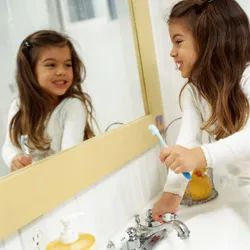How to Prepare your Child for a Successful School Year!
School Year Routines
 With school starting in a few short weeks, it is a great time to turn your attention towards how to best prepare your child for the school year. Most families enjoy summer by taking vacations, enrolling the children in camps, or enjoying the lack-of-routine that summer provides. A key transition to prepare your child for school is beginning to set-up and practice your “school year routines”.
With school starting in a few short weeks, it is a great time to turn your attention towards how to best prepare your child for the school year. Most families enjoy summer by taking vacations, enrolling the children in camps, or enjoying the lack-of-routine that summer provides. A key transition to prepare your child for school is beginning to set-up and practice your “school year routines”.
Montessori classrooms give great inspiration for how to set routines at home. In the Montessori classroom, children are given consistent routines and a “prepared environment” to learn with each day. This consistency and preparation provides a child with external order, a key component to the child developing a sense of internal order and safety.
“Children have a developmental need for order that is present through age 2.5, but can stretch out to age 5 depending on the child. Having routines in place can help a child feel secure and know what to expect —E. M. Standing, Maria Montessori, Her Life and Work"
A Consistent and Prepared Environment
 A key foundation for a successful school year is to have a consistent and prepared environment that supports a child’s success in getting ready for school, winding down after school, and getting a good night’s sleep. When you make these routines with your child, be sure to hold these routines as consistently as possible, so the child can benefit from the order and safety of consistent expectations.Montessori believed that the state of concentration and the ability to focus and work is the true 'normal' state of children and is free to develop in a consistent and prepared environment.
A key foundation for a successful school year is to have a consistent and prepared environment that supports a child’s success in getting ready for school, winding down after school, and getting a good night’s sleep. When you make these routines with your child, be sure to hold these routines as consistently as possible, so the child can benefit from the order and safety of consistent expectations.Montessori believed that the state of concentration and the ability to focus and work is the true 'normal' state of children and is free to develop in a consistent and prepared environment.

Be Creative and Get the Right Tools
To create a prepared environment at home, consider 2 key ingredients. First, be creative about how to make plans for consistent routines with your child. Buy some fun colored cardstock paper and bright colored markers to write out the routine and make the chart with your child. Children are always more likely to cooperate with a plan if they helped create the plan. Second, be thoughtful about which tools will be needed in the environment. For example, if the routine list is “1) Put your lunch bag on the counter 2) put your backpack on the hook”, then be sure to put a stool near the counter and add a low hanging hook on the wall so the tasks are achievable for the child.
These steps of setting consistent routines and preparing the environment will best enable your child to succeed at his daily routine, and thus be more successful in his school year.




















